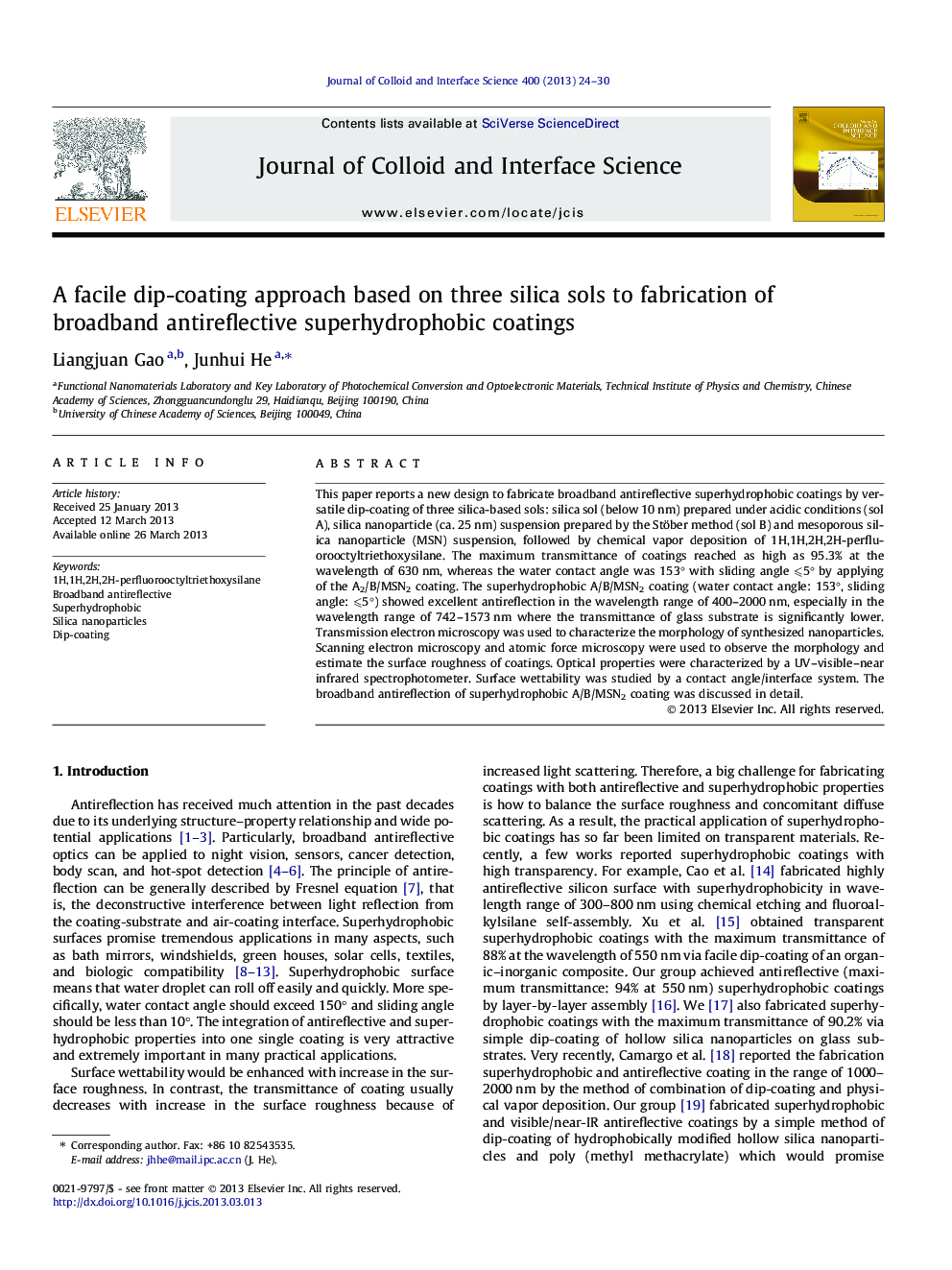| Article ID | Journal | Published Year | Pages | File Type |
|---|---|---|---|---|
| 607700 | Journal of Colloid and Interface Science | 2013 | 7 Pages |
•A facile dip-coating method was used to fabricate coatings.•The coatings showed excellent antireflection in the wavelength range of 400–2000 nm.•The coatings were superhydrophobic after hydrophobic modification.
This paper reports a new design to fabricate broadband antireflective superhydrophobic coatings by versatile dip-coating of three silica-based sols: silica sol (below 10 nm) prepared under acidic conditions (sol A), silica nanoparticle (ca. 25 nm) suspension prepared by the Stöber method (sol B) and mesoporous silica nanoparticle (MSN) suspension, followed by chemical vapor deposition of 1H,1H,2H,2H-perfluorooctyltriethoxysilane. The maximum transmittance of coatings reached as high as 95.3% at the wavelength of 630 nm, whereas the water contact angle was 153° with sliding angle ⩽5° by applying of the A2/B/MSN2 coating. The superhydrophobic A/B/MSN2 coating (water contact angle: 153°, sliding angle: ⩽5°) showed excellent antireflection in the wavelength range of 400–2000 nm, especially in the wavelength range of 742–1573 nm where the transmittance of glass substrate is significantly lower. Transmission electron microscopy was used to characterize the morphology of synthesized nanoparticles. Scanning electron microscopy and atomic force microscopy were used to observe the morphology and estimate the surface roughness of coatings. Optical properties were characterized by a UV–visible–near infrared spectrophotometer. Surface wettability was studied by a contact angle/interface system. The broadband antireflection of superhydrophobic A/B/MSN2 coating was discussed in detail.
Graphical abstractFigure optionsDownload full-size imageDownload high-quality image (62 K)Download as PowerPoint slide
